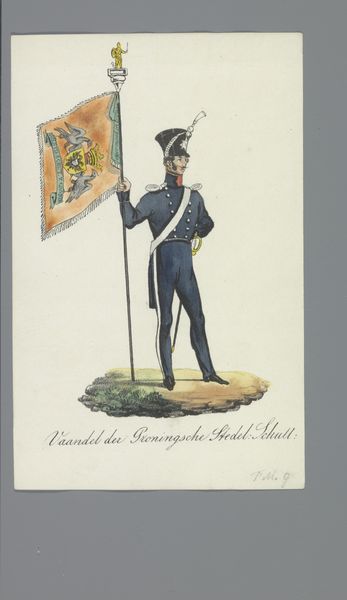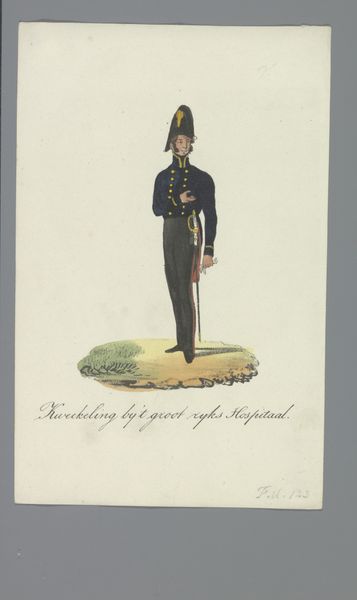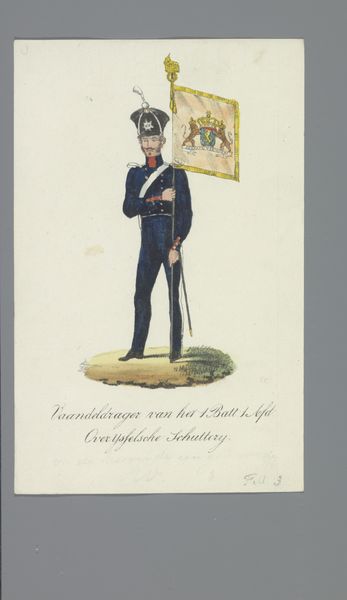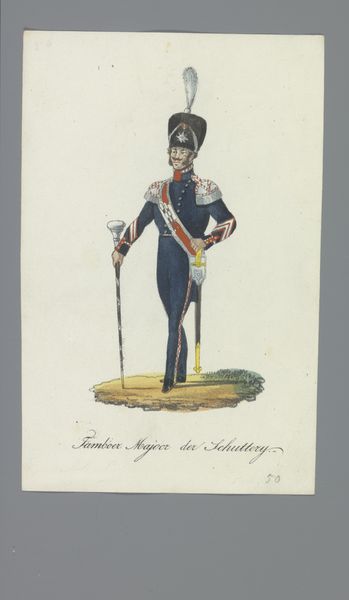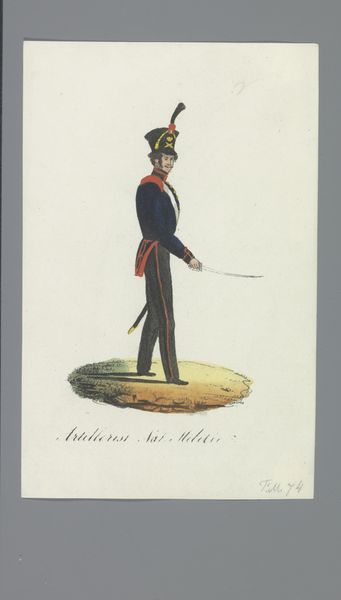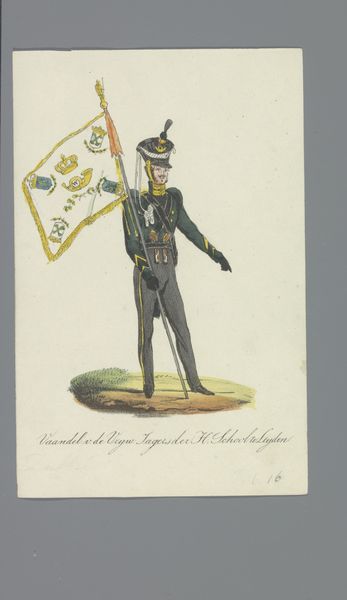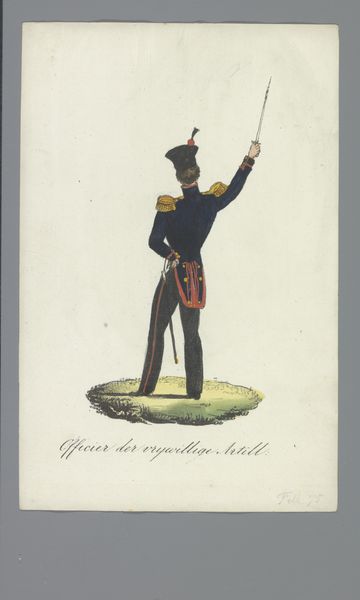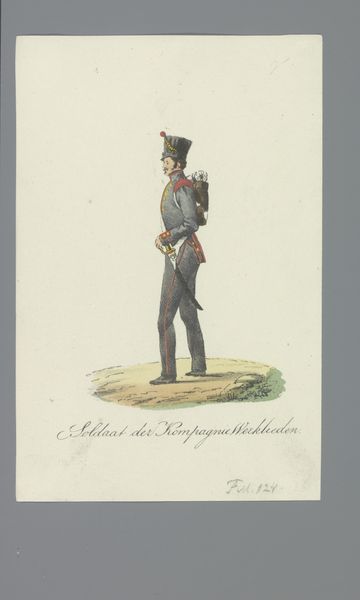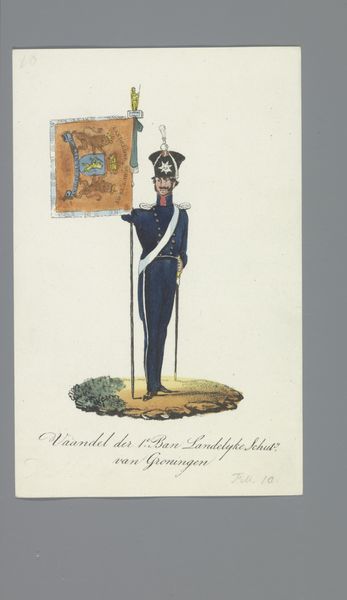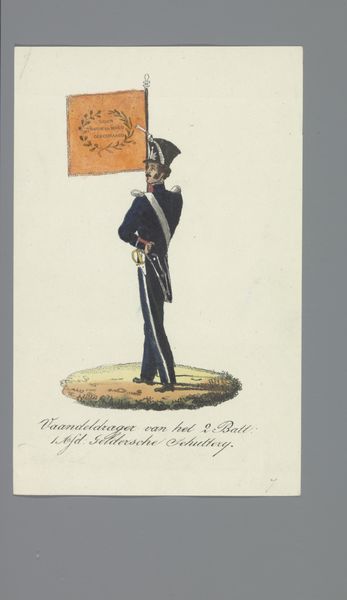
Vaandeldrager der Friessche Prov: Schutterij. Op de keerzijde de woorden: Eerste Ban Friezen 1835 - 1850
0:00
0:00
drawing, watercolor
#
portrait
#
drawing
#
watercolor
#
romanticism
#
costume
#
watercolour illustration
#
genre-painting
Dimensions: height 170 mm, width 110 mm
Copyright: Rijks Museum: Open Domain
Editor: Here we have "Vaandeldrager der Friessche Prov: Schutterij. Op de keerzijde de woorden: Eerste Ban Friezen," a watercolor drawing by Albertus Verhoesen, sometime between 1835 and 1850. I'm struck by the detail in the uniform. What catches your eye? Curator: It's the materiality and what it reveals about social context that grabs me. We see a meticulously rendered uniform, indicative of the Dutch citizen militia. Consider the labour involved: the weaving of the fabric, the tailoring, the crafting of the weapons. These weren’t mass-produced items as we know them. Editor: Right, each element probably required specialized craftsmanship. Curator: Exactly. This points to a very particular investment, both individual and collective, in civic identity and military preparedness. And what does it mean to portray this within the conventions of romanticism, when looking at the means through which it came to being. How does this shape, then influence the style? Editor: I see what you mean! Romanticism idealized certain things. This almost grounds that idealism in something very real – the cost and labor. Was art like this potentially used as recruitment material or maybe served a commemorative function? Curator: Precisely. And the consumption of such an image becomes another layer. Who was the intended audience, and how would they have interpreted the message conveyed through the choice of materials and its making. It seems, if you ask me, very well rooted in social standing and the production aspect for this class system. What do you think? Editor: I hadn’t considered the economics of the image itself. Looking at art with a materialist lens reveals hidden aspects. I definitely see this painting now through the means of the artist, not just as pretty watercolor. Thanks. Curator: The material world often holds the richest insights.
Comments
No comments
Be the first to comment and join the conversation on the ultimate creative platform.


